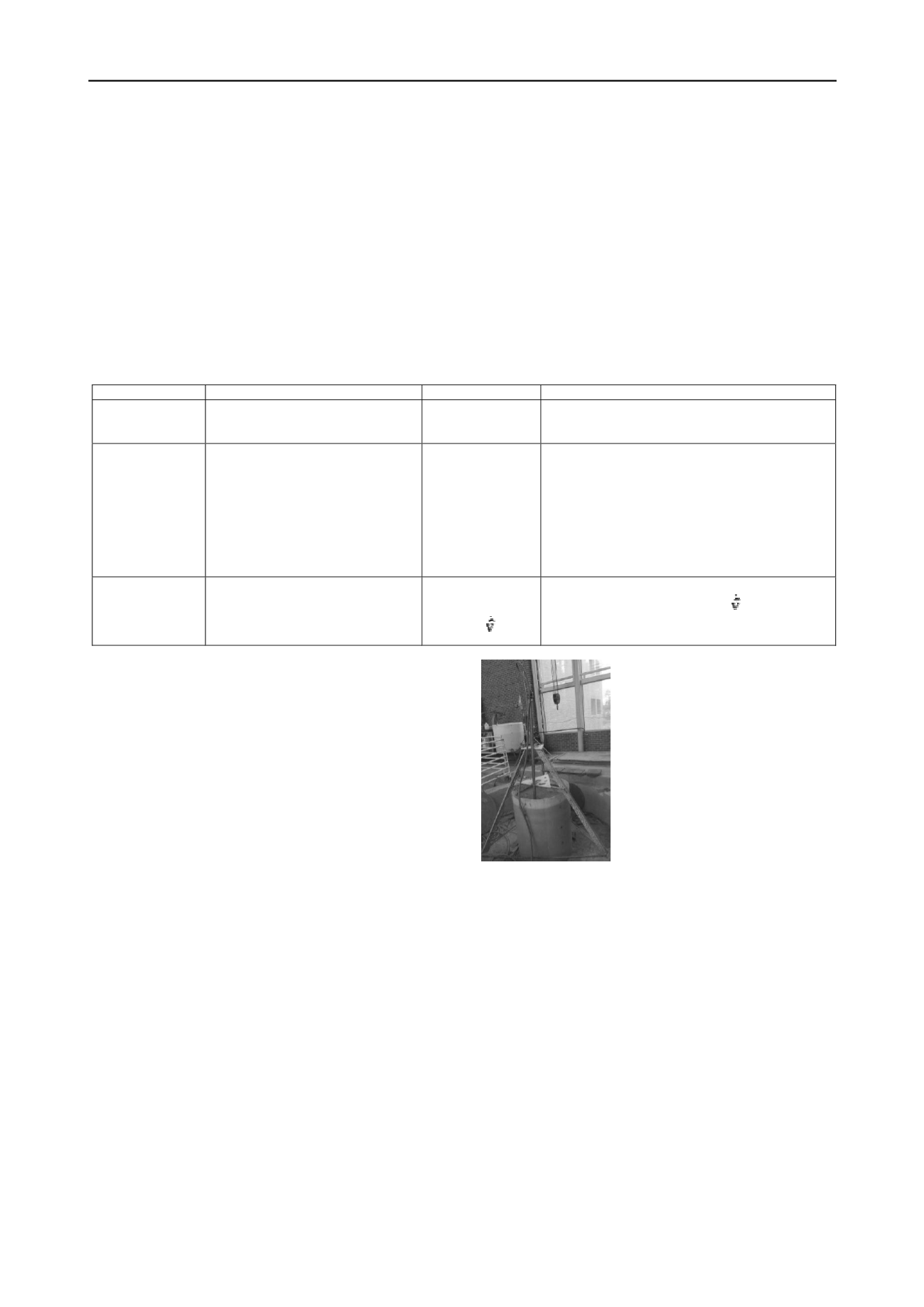
564
Proceedings of the 18
th
International Conference on Soil Mechanics and Geotechnical Engineering, Paris 2013
decreased with the decrease of the initial water content for
the saturated “cohesive” soil. Briaud et al. (1999, 2001 and
2004) presented a method termed SRICOS for predicting
scour in “cohesive” soils, with such an approach being the
most comprehensive to date in literature.
Scouring experiments around cylinders using “clay”–
sand mixtures were carried out by Hosny (1995), Ansari et al.
(2002), and Debnath and Chaudhuri (2010a, 2010b), among
others, with fines fraction in the range of 0.05–0.4, 0.1–0.6,
0.2–1.0 and 0.05–0.35, respectively. Hosny (1995), and
Debnath and Chaudhuri (2010a, 2010b) concluded that
maximum scour depth decreases with the increase of “fines”
content whereas Ansari et al. (2002) indicated that the
maximum equilibrium scour depth in sediments with fine
contents could be higher than that of non-cohesive sediments
under similar experimental conditions. Perhaps one reason
for the difference in conclusions is attributed to the nature of
fine being used in the study. In Ansari et al.’s (2002) study,
the soil is reported as having zero Plasticity Index (PI). Table
1 shows several empirical equations to estimate scour depth,
with the corresponding fines fraction and Froude number
range for their applicability. The equations proposed by
Hosny (1995), and Debnath and Chaudhuri (2010a, 2010b)
are only applicable for a rather narrow Froude number (i.e.
0.13 – 0.33) range, in comparison to Ansari et al.’s (2002)
range.
Table 1. Empirical Equations for Estimating Scour Around Bridge Piers for Soils with Fine Contents
Reference
Equation
Conditions
Comment
Hosny (1995)
d
s
/b =18.9(F
r
/(1+C))
2
C ≤ 0.4 and
0.18 ≤ F
r
≤ 0.33
b = pier diameter, F
r
= Froude number = V/(gd)
0.5
, V =
approach flow velocity, g = gravitational acceleration,
d = depth of flow and C = clay fraction.
Ansari et al.
(2002)
d
smc
/d
sms
= 1.51(C
*
/φ
*
)
0.2
PI = 0 and
0.16 ≤ F
r
≤ 0.69
d
smc
= maximum scour depth for cohesive sediments,
d
sms =
maximum scour depth for cohesionless sediments
(estimated using equation proposed by Kothyari et al.
(1992)), C
*
= [%P
c
. C
u
] / [(γ
s
-γ
w
).d
a
], φ
*
= [%P
c
. tan φ
c
+ (1 – %P
c
) * tan φ
s
] / tan φ
s
, %P
c
= percentage of clay
content, C
u
= undrained shear strength of soil, γ
s
= unit
weight of soil, γ
w
= unit weight of water, d
a
= arithmetic
mean diameter, φ
c
= angle of internal friction for clay
and φ
s
= angle of internal friction for sand.
Debnath and
Chaudhuri (2010b) d
s
/b = 8.2F
r
0.79
C
-0.28
(IWC)
0.15
(τ
s
/ρV
2
)
-0.38
0.13 ≤ F
r
≤ 0.20,
W.C. ≤ 0.4, C ≤ 0.4
and 0.78 ≤ ≤ 1.65
C = clay fraction, IWC = initial water content, τ
s
= bed
shear strength, ρ = density of water, = V/V
cs
, V
cs
is
critical threshold velocity for sand and V = approach
flow velocity.
3 EXPERIMENTAL PROGRAM
Testing was conducted in a circular chamber with a diameter
of 1.0 m (3.3 ft) and a depth of 1.0 m (3.3 ft). Two 1.5 m long
probe sections, with the bottom section fitted with 19 mm
truncated tip, were used for testing. Figure 1 shows the probe
set up prior to testing.
3.1 Test Soil
The test soil was composed of 15% fine grained particles and
85% sand by dry weight. Percent dispersion of the fine
grained fraction was estimated by performing Double
Hydrometer test. Percent dispersion is the ratio of the dry
mass of particles smaller than 0.005 mm diameter, without a
chemical dispersant, to the same type of data from the
hydrometer test but with a chemical dispersant, expressed as
a percentage. A dispersion value higher than 50% was
obtained for the fine grained soil, and therefore the fine
fraction is classified as dispersive. The sand and the fine soil
components were mixed thoroughly with an electrical mixer,
in a drum, until a uniform mix was obtained. The mixing
process was repeated after the soil was transferred to the test
chamber (shown in Figure 1).
Figure 1. Photograph of the Probe
Set Up in the Chamber Prior to
Testing
The chamber was filled up to 1m mark with the silty sand
soil and approximately 0.45 kN weight was applied on the
top, to induce consolidation, for a week. Several specimens
were then retrieved for physical characterization of the test
soil. Initial water content of the mixture ranged of 18% -
23%. The results from the particle size analysis for three
types of soils are shown in Figure 2, with the test soil
designated as “Silty Sand” (all soils have been designated
according to Unified Soil Classification System). Table 2
shows the physical and strength properties of the test soil,
with the undrained strength estimated using the Fall Cone
test.


